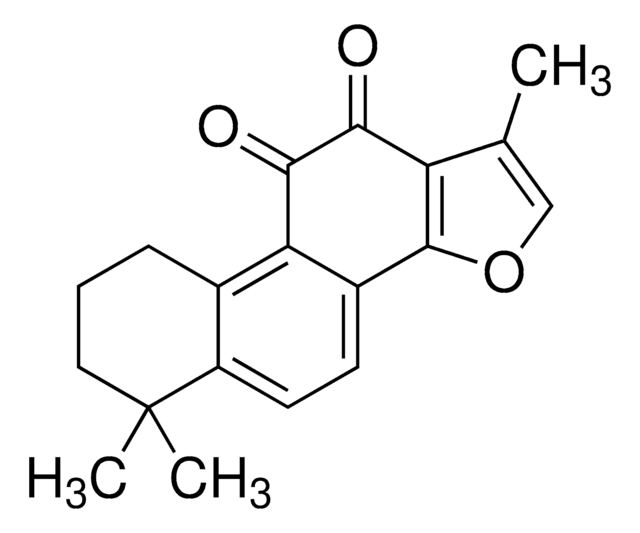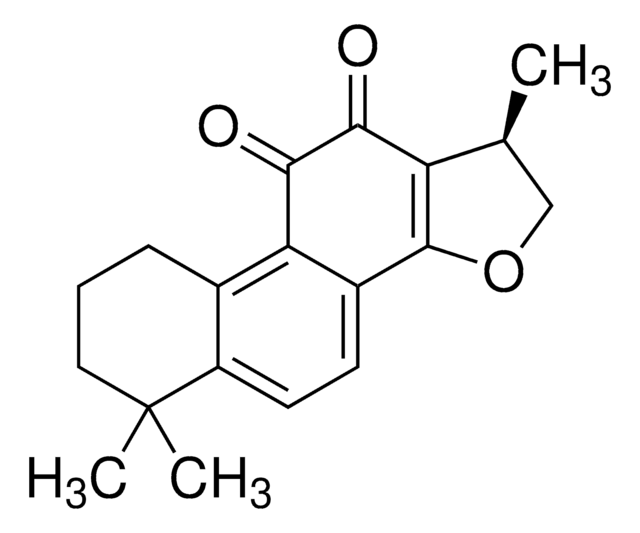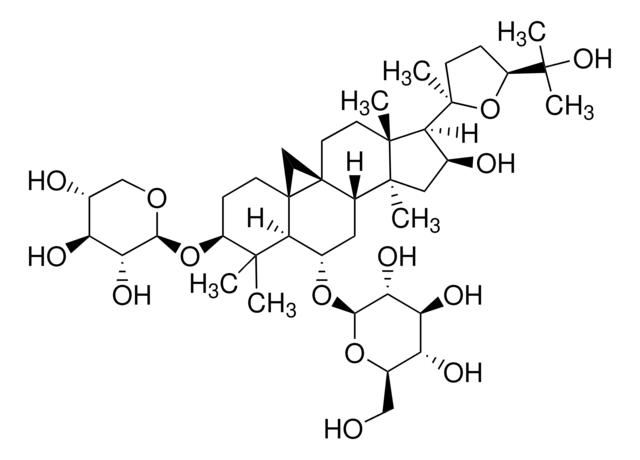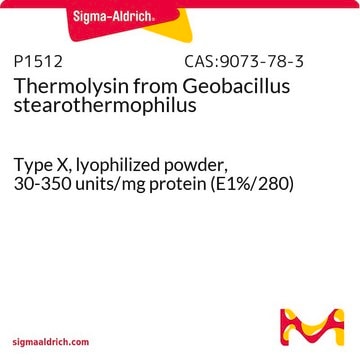C5624
Cryptotanshinone
≥98% (HPLC)
Synonym(e):
1,2,6,7,8,9-hexahydro-1,6,6-trimethyl- (R)-phenanthro(1,2-b)furan-10,11-dione, Cryptotanshinon, Tanshinone c
About This Item
Empfohlene Produkte
Assay
≥98% (HPLC)
Form
powder
Optische Aktivität
[α]/D -80 to -99°, c = 0.5 in chloroform-d
Lagerbedingungen
desiccated
protect from light
Farbe
orange-brown
Löslichkeit
DMSO: ≥5 mg/mL
Anwendung(en)
metabolomics
vitamins, nutraceuticals, and natural products
Lagertemp.
2-8°C
SMILES String
C[C@H]1COC2=C1C(=O)C(=O)c3c4CCCC(C)(C)c4ccc23
InChI
1S/C19H20O3/c1-10-9-22-18-12-6-7-13-11(5-4-8-19(13,2)3)15(12)17(21)16(20)14(10)18/h6-7,10H,4-5,8-9H2,1-3H3/t10-/m0/s1
InChIKey
GVKKJJOMQCNPGB-JTQLQIEISA-N
Biochem./physiol. Wirkung
Lagerklassenschlüssel
13 - Non Combustible Solids
WGK
WGK 3
Flammpunkt (°F)
Not applicable
Flammpunkt (°C)
Not applicable
Analysenzertifikate (COA)
Suchen Sie nach Analysenzertifikate (COA), indem Sie die Lot-/Chargennummer des Produkts eingeben. Lot- und Chargennummern sind auf dem Produktetikett hinter den Wörtern ‘Lot’ oder ‘Batch’ (Lot oder Charge) zu finden.
Besitzen Sie dieses Produkt bereits?
In der Dokumentenbibliothek finden Sie die Dokumentation zu den Produkten, die Sie kürzlich erworben haben.
Kunden haben sich ebenfalls angesehen
Unser Team von Wissenschaftlern verfügt über Erfahrung in allen Forschungsbereichen einschließlich Life Science, Materialwissenschaften, chemischer Synthese, Chromatographie, Analytik und vielen mehr..
Setzen Sie sich mit dem technischen Dienst in Verbindung.









